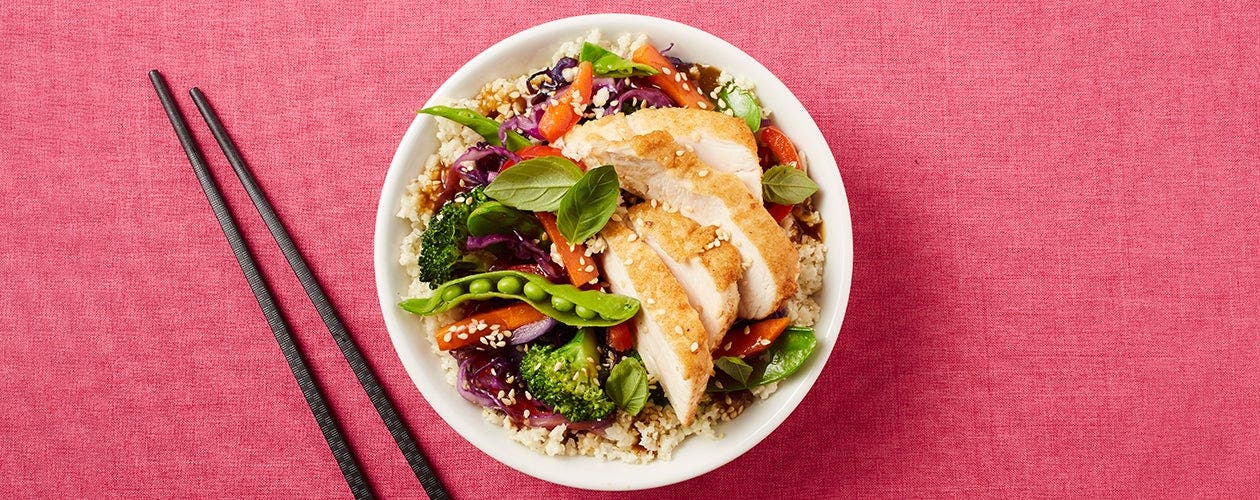Remake your plate


4 tips for making healthier plate choices
Do you start your day with a nutritious breakfast, pack your bag with healthy snacks and make good food choices at lunch, only to have it all fall apart at dinnertime? You’re not alone. Many people find serving up a healthy evening meal a challenge. Read on for five practical tips that will help you gain control of your eating habits.
1. Clean out your crockery cupboard
A main cause of overeating at dinnertime comes from what you’re eating off. Dr Brian Wansink, director of the Cornell University Food and Brand Lab, estimates that an oversized dinner plate causes you to serve (and eat) an extra 20 per cent or more of food. For instance, a cup of cooked rice fits perfectly into a traditional blue and white Chinese bowl. When placed in a modern stir-fry bowl, however, you unconsciously add twice as much to try and fill the space. Using large bowls, like pasta bowls, can cause you to plate up an extra 40 per cent or more.
Take control: Reduce your dinner plate size from 30cm to 25cm and you’ll plate a slightly smaller, but still significant, serve that leaves you satisfied.
2. Get informed about correct portion sizes
With masses of food within our reach (and our budgets), it’s easy to blame our supersized food supply for our supersized waistlines. But when was the last time you stopped and took a good look at your portion sizes? Learning about correct-sized portions can instantaneously boost your weight-loss effort. Measuring cups, jugs and spoons are a must-have in any kitchen, with digital scales providing an added edge. Try to dish out 20 per cent less than you think you might want to eat, except for fruits and vegetables, where you should dish out 20 per cent more.
Take control: Use real-life objects as a visual guide to portion sizes. A 30g portion of cheese is about the size of a matchbox, while a portion of lean meat, fish or poultry is the size of your palm.
3. Stay ahead of hunger
Have you ever arrived home from work after not eating for hours and ended up wolfing down fatty fast food? When you’re ravenously hungry, you’re more likely to make food choices based on what’s convenient, rather than what works best for weight loss. That’s why it’s so important to stay ahead of hunger and learn how to listen to your body’s signals. Take the time to cook a meal, and munch on sticks of carrot and celery with salsa to decrease the urge to eat high-kilojoule snacks.
Take control: Halfway through each meal, stop, rest and assess. Stop eating, rest your knife and fork for a few minutes and assess your hunger levels. Aim to leave the table just comfortably satisfied, rather than completely stuffed.
4. Treat yourself wisely
After a long day spent juggling work and family, it’s common to feel like you deserve a treat. Another trap is skipping dessert, then overdoing it with night-time nibbles, such as turning two squares of chocolate into two rows (or even a whole block). If you find yourself constantly craving something sweet in the evening, plan ahead for a healthier fruit-based dessert. Have one helping, then quickly store away the remainder. Or treat yourself in non-food ways, like taking a bath or curling up with a new magazine.
Take control: Brushing your teeth after dinner is an easy way to signify a meal is over and that it’s time to stop eating.
